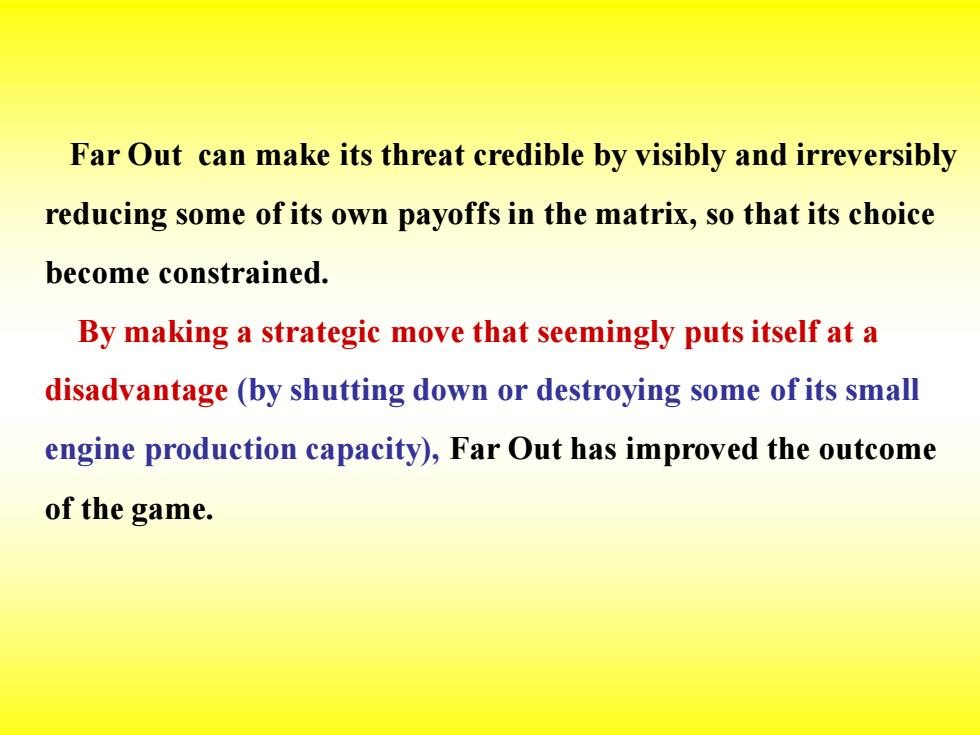
Far Out can make its threat credible by visibly and irreversibly reducing some of its own payoffs in the matrix,so that its choice become constrained. By making a strategic move that seemingly puts itself at a disadvantage(by shutting down or destroying some of its small engine production capacity),Far Out has improved the outcome of the game
Far Out can make its threat credible by visibly and irreversibly reducing some of its own payoffs in the matrix, so that its choice become constrained. By making a strategic move that seemingly puts itself at a disadvantage (by shutting down or destroying some of its small engine production capacity), Far Out has improved the outcome of the game
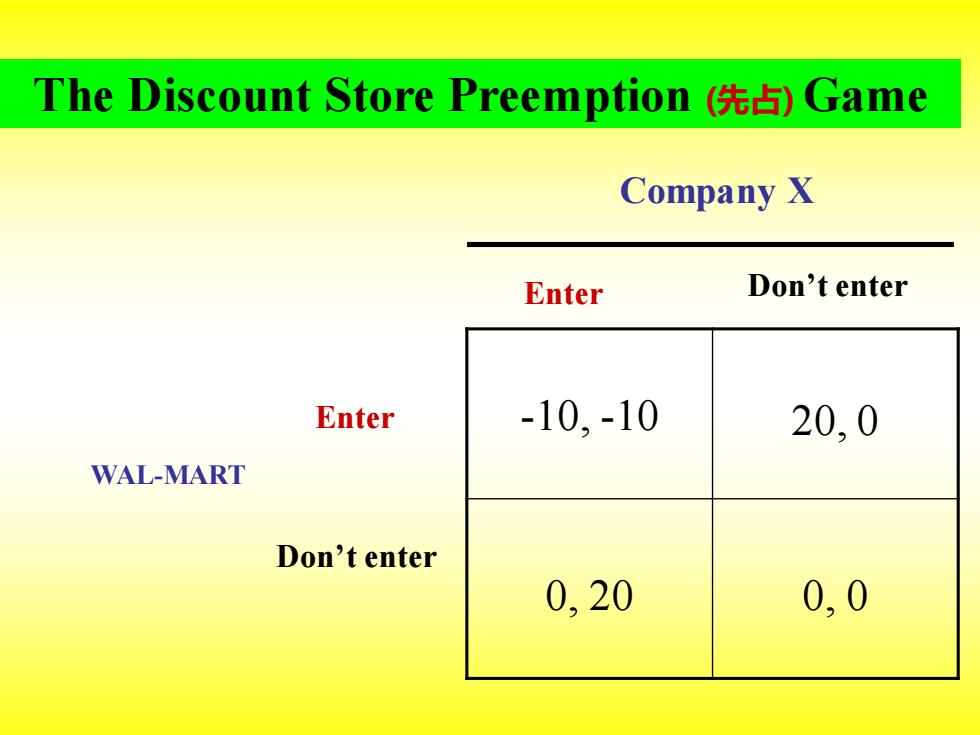
The Discount Store Preemption(先占)Game Company X Enter Don't enter Enter -10,-10 20,0 WAL-MART Don't enter 0,20 0,0
-10, -10 20, 0 0, 20 0, 0 Company X Enter Don’t enter WAL-MART Enter Don’t enter The Discount Store Preemption (先占) Game
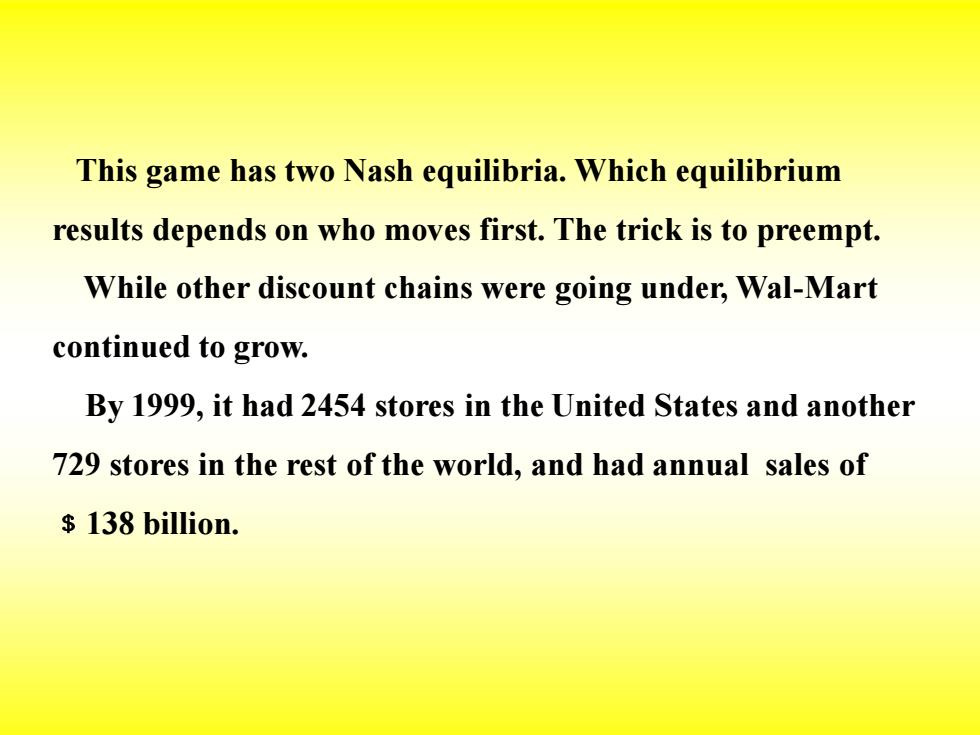
This game has two Nash equilibria.Which equilibrium results depends on who moves first.The trick is to preempt. While other discount chains were going under,Wal-Mart continued to grow. By 1999,it had 2454 stores in the United States and another 729 stores in the rest of the world,and had annual sales of 138 billion
This game has two Nash equilibria. Which equilibrium results depends on who moves first. The trick is to preempt. While other discount chains were going under, Wal-Mart continued to grow. By 1999, it had 2454 stores in the United States and another 729 stores in the rest of the world, and had annual sales of ﹩138 billion
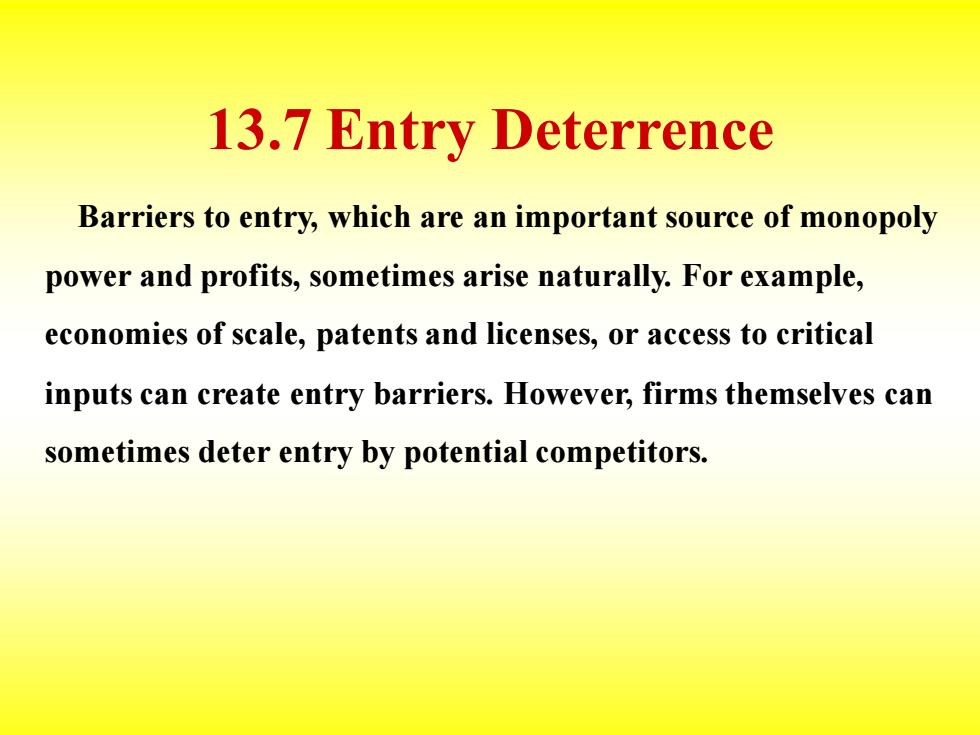
13.7 Entry Deterrence Barriers to entry,which are an important source of monopoly power and profits,sometimes arise naturally.For example, economies of scale,patents and licenses,or access to critical inputs can create entry barriers.However,firms themselves can sometimes deter entry by potential competitors
Barriers to entry, which are an important source of monopoly power and profits, sometimes arise naturally. For example, economies of scale, patents and licenses, or access to critical inputs can create entry barriers. However, firms themselves can sometimes deter entry by potential competitors. 13.7 Entry Deterrence
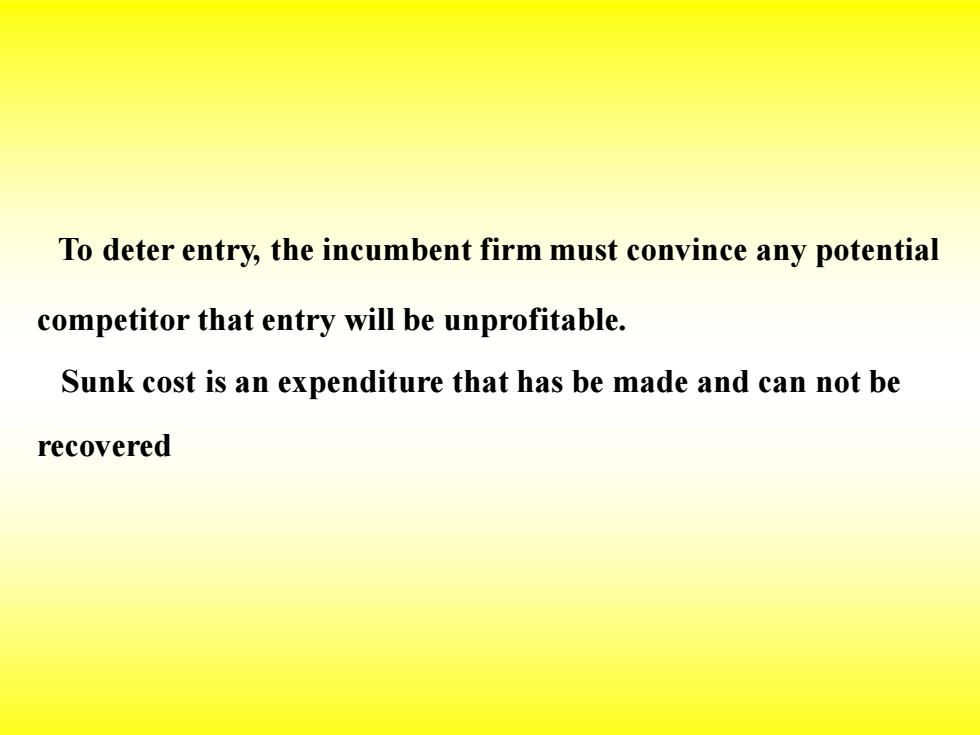
To deter entry,the incumbent firm must convince any potential competitor that entry will be unprofitable. Sunk cost is an expenditure that has be made and can not be recovered
To deter entry, the incumbent firm must convince any potential competitor that entry will be unprofitable. Sunk cost is an expenditure that has be made and can not be recovered